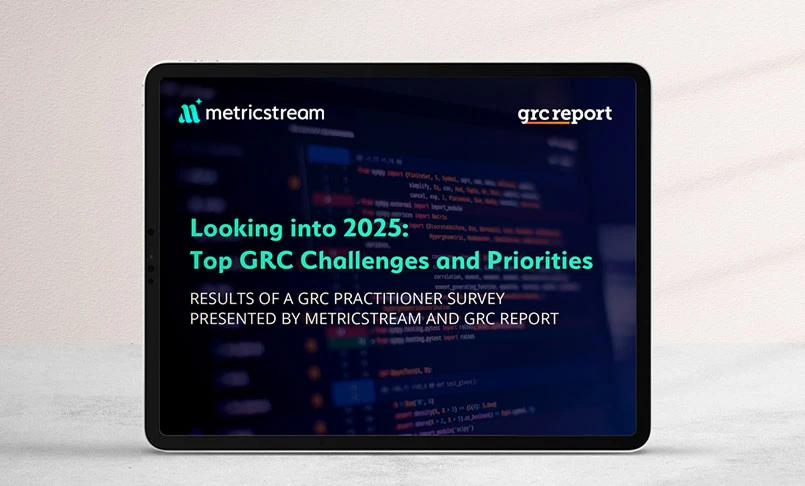Introduction
'No risk, no reward'.
Undoubtedly, risks exist in nearly every phase of the business; from startup to project execution and even, for market leaders, within every potential growth decision. But it's not always a rocky path to navigate, especially if we equip ourselves with effective risk mitigation strategies.
At its most fundamental, risk mitigation refers to the steps an organization takes to minimize potential threats that could significantly impact its operations.
However, contrary to what you might think, it doesn't necessarily aim at eliminating these threats. Instead, it revolves around diminishing the negative effects of these risks, with strategic risk planning and action.
What Is a Risk Mitigation Strategy?
Risk mitigation strategies are structured plans aimed at reducing the likelihood or impact of potential risks. The four main approaches—avoidance, reduction, transference, and acceptance—help organizations manage uncertainty and protect business operations.
Risk mitigation strategy is the action plan put in place to reduce or eliminate the impact of risks. There are four common risk mitigation strategies such as risk avoidance, reduction, transference, and acceptance.
What is the Difference between Risk Mitigation and Risk Management?
While risk mitigation is part of risk management, they aren't identical twins.
Risk management is the umbrella process of identifying, assessing, and prioritizing uncertainties in business environments. This entire spectrum, or risk portfolio, provides a clear picture of the threats.
However, understanding and recognizing these risks isn't enough. Risk mitigation hones in on these identified risks, devising strategies and actionable plans to alleviate their impacts. This strategy jumps into the battlefield and seeks to curtail the threats in their very path, preventing a disastrous encounter and also ensuring we emerge on the other side with minimal scars.
Now that we've got the preliminaries covered, let's explore ten efficient risk mitigation strategies that can come in handy for your business.
Risk Mitigation Strategies
Risk is inevitable in any business—but how an organization chooses to handle it makes all the difference. Risk mitigation strategies are structured approaches that help businesses reduce the likelihood or impact of potential threats. These 7 strategies not only protect operations but also enable smart decision-making aligned with the organization's risk appetite.
Here’s a more detailed look at each strategy, along with examples to illustrate how they work in practice:
1. Risk Acceptance
Risk acceptance doesn’t mean ignoring a threat—it’s a calculated decision to live with certain risks when the potential benefits outweigh the downsides.
Example:
A tech startup developing an experimental AI product knows there’s a high chance of financial loss. However, the innovation could position them as an industry leader. Accepting this risk reflects strategic confidence in their long-term vision.
2. Risk Avoidance
This strategy involves steering clear of activities or decisions that could expose the organization to unacceptable risk levels.
Examples:
A company might discontinue a product that poses regulatory risks.
An HR department could prevent legal trouble by investing in thorough staff training and updated workplace policies.
3. Risk Transfer
Risk transfer shifts the impact of potential risks to a third party, typically through contractual agreements or insurance.
Examples:
Purchasing cyber liability insurance to cover data breach costs.
Outsourcing IT operations to a managed service provider with stronger security infrastructure.
4. Risk Sharing
Also known as risk distribution, this involves collaborating with others to jointly bear the impact of a potential risk.
Example:
Two pharmaceutical companies co-develop a drug and share the risks of clinical trials and regulatory approval, so neither bears the full financial burden if things go south.
5. Risk Buffering
Risk buffering is about building protective cushions to absorb shocks from unexpected events or fluctuations.
Example:
A manufacturing company maintains surplus inventory to buffer against supply chain disruptions. Though it may increase storage costs, it ensures uninterrupted production during supplier delays.
6. Risk Strategizing
This big-picture approach involves analyzing, prioritizing, and proactively planning for risks before they become actual threats.
Example:
Before launching a new product, a retail brand might perform market testing, competitor benchmarking, and customer interviews to uncover possible risks and shape strategy accordingly.
7. Risk Reduction
Risk reduction minimizes either the probability or impact of a threat through preventative measures.
Example:
An IT firm invests in multi-layered cybersecurity, staff training, and routine audits to reduce the risk and severity of data breaches.
These strategies aren’t mutually exclusive. Often, organizations blend several approaches to build a robust, resilient risk management plan tailored to their goals and risk appetite.
Steps to Implement Risk Mitigation
Implementing a risk mitigation plan is a structured, strategic process that helps organizations reduce the likelihood and impact of potential threats. Whether you're dealing with financial, operational, cybersecurity, or compliance-related risks, following a clear roadmap ensures your mitigation efforts are effective and aligned with business goals.
Here’s a step-by-step breakdown of how to implement risk mitigation successfully:
1. Identify Potential Risks
The first step is recognizing what could go wrong. This involves conducting comprehensive risk assessments across all critical areas—finance, operations, IT, legal, third parties, and more.
How to do it:
- Perform SWOT analysis or risk workshops
- Interview key stakeholders and team leads
- Review historical incident data or audit reports
2. Analyze and Prioritize Risks
Once identified, each risk should be evaluated based on two factors: likelihood and potential impact. This allows you to prioritize which risks need immediate attention and which can be monitored over time.
Tools you can use:
- Risk matrix (heat map)
- Qualitative/quantitative scoring
- Cost-benefit analysis
3. Determine Appropriate Mitigation Strategies
Not all risks require the same approach. Choose the most suitable mitigation strategy—avoidance, reduction, transfer, sharing, acceptance, or a combination—based on the organization's risk appetite and available resources.
Example:
- High-impact, high-likelihood risks may call for avoidance or reduction.
- Lower-level risks with manageable consequences might be accepted or shared.
4. Develop a Risk Mitigation Plan
A good mitigation plan outlines who is responsible, what actions will be taken, when they will be done, and how success will be measured. It should also include communication plans and contingency measures.
Key components to include:
- Risk description
- Chosen strategy
- Mitigation tasks
- Responsible owners
- Deadlines and milestones
- Metrics for tracking effectiveness
5. Implement the Plan
Execution involves putting controls in place, adjusting workflows, training staff, or updating systems. This phase requires coordination across teams and clear communication to ensure everyone understands their role in reducing risk.
Pro tip: Assign a risk owner for each major risk to ensure accountability and progress.
6. Monitor and Review
Risk mitigation is not a “set it and forget it” process. Continuous monitoring helps you assess whether mitigation efforts are working and adjust your plan if conditions change.
Monitoring actions might include:
- Key risk indicators (KRIs)
- Internal audits or compliance checks
- Incident tracking and near-miss reporting
7. Document and Communicate
Keep a well-organized record of risk mitigation activities, decisions, and outcomes. Regularly share updates with stakeholders and leadership to maintain transparency and alignment.
Why this matters: Documentation supports audit readiness, improves institutional knowledge, and strengthens future risk response.
8. Refine and Improve
No plan is perfect. After implementation, revisit the process to learn what worked, what didn’t, and how future mitigation efforts can be improved.
Conduct a post-mitigation review to:
- Measure results against KPIs
- Identify gaps or unexpected outcomes
- Incorporate feedback from involved teams
By following these steps, organizations can build a proactive risk culture—one that doesn’t just react to problems but anticipates and prepares for them. Solid risk mitigation leads to better decision-making, fewer surprises, and greater business resilience.
Conclusion
Every strategy listed here offers its unique fortitude to make organizations more risk-resilient, and, when used in tandem, these strategies could provide a foolproof shield against looming uncertainties. That said, they are only a fraction of the entire arsenal.
When it comes to risk mitigation, the pathway to a secure organization isn’t a distant dream but a matter of employing a well-defined strategy. It is quintessential to employ a multi-faceted, continuously evolving, approach to risk management to combat the variety of challenges in the world today.
Each organization's strategy must align itself with the specific structure, goals, environment, and complexities of that particular organization.
Risk mitigation is not a one-off process, but an ongoing strategic approach that has to be dynamic and adaptable.
Crafting the right risk mitigation strategies hence, becomes as much a science as it is an art.
'No risk, no reward'.
Undoubtedly, risks exist in nearly every phase of the business; from startup to project execution and even, for market leaders, within every potential growth decision. But it's not always a rocky path to navigate, especially if we equip ourselves with effective risk mitigation strategies.
At its most fundamental, risk mitigation refers to the steps an organization takes to minimize potential threats that could significantly impact its operations.
However, contrary to what you might think, it doesn't necessarily aim at eliminating these threats. Instead, it revolves around diminishing the negative effects of these risks, with strategic risk planning and action.
Risk mitigation strategies are structured plans aimed at reducing the likelihood or impact of potential risks. The four main approaches—avoidance, reduction, transference, and acceptance—help organizations manage uncertainty and protect business operations.
Risk mitigation strategy is the action plan put in place to reduce or eliminate the impact of risks. There are four common risk mitigation strategies such as risk avoidance, reduction, transference, and acceptance.
What is the Difference between Risk Mitigation and Risk Management?
While risk mitigation is part of risk management, they aren't identical twins.
Risk management is the umbrella process of identifying, assessing, and prioritizing uncertainties in business environments. This entire spectrum, or risk portfolio, provides a clear picture of the threats.
However, understanding and recognizing these risks isn't enough. Risk mitigation hones in on these identified risks, devising strategies and actionable plans to alleviate their impacts. This strategy jumps into the battlefield and seeks to curtail the threats in their very path, preventing a disastrous encounter and also ensuring we emerge on the other side with minimal scars.
Now that we've got the preliminaries covered, let's explore ten efficient risk mitigation strategies that can come in handy for your business.
Risk is inevitable in any business—but how an organization chooses to handle it makes all the difference. Risk mitigation strategies are structured approaches that help businesses reduce the likelihood or impact of potential threats. These 7 strategies not only protect operations but also enable smart decision-making aligned with the organization's risk appetite.
Here’s a more detailed look at each strategy, along with examples to illustrate how they work in practice:
1. Risk Acceptance
Risk acceptance doesn’t mean ignoring a threat—it’s a calculated decision to live with certain risks when the potential benefits outweigh the downsides.
Example:
A tech startup developing an experimental AI product knows there’s a high chance of financial loss. However, the innovation could position them as an industry leader. Accepting this risk reflects strategic confidence in their long-term vision.
2. Risk Avoidance
This strategy involves steering clear of activities or decisions that could expose the organization to unacceptable risk levels.
Examples:
A company might discontinue a product that poses regulatory risks.
An HR department could prevent legal trouble by investing in thorough staff training and updated workplace policies.
3. Risk Transfer
Risk transfer shifts the impact of potential risks to a third party, typically through contractual agreements or insurance.
Examples:
Purchasing cyber liability insurance to cover data breach costs.
Outsourcing IT operations to a managed service provider with stronger security infrastructure.
4. Risk Sharing
Also known as risk distribution, this involves collaborating with others to jointly bear the impact of a potential risk.
Example:
Two pharmaceutical companies co-develop a drug and share the risks of clinical trials and regulatory approval, so neither bears the full financial burden if things go south.
5. Risk Buffering
Risk buffering is about building protective cushions to absorb shocks from unexpected events or fluctuations.
Example:
A manufacturing company maintains surplus inventory to buffer against supply chain disruptions. Though it may increase storage costs, it ensures uninterrupted production during supplier delays.
6. Risk Strategizing
This big-picture approach involves analyzing, prioritizing, and proactively planning for risks before they become actual threats.
Example:
Before launching a new product, a retail brand might perform market testing, competitor benchmarking, and customer interviews to uncover possible risks and shape strategy accordingly.
7. Risk Reduction
Risk reduction minimizes either the probability or impact of a threat through preventative measures.
Example:
An IT firm invests in multi-layered cybersecurity, staff training, and routine audits to reduce the risk and severity of data breaches.
These strategies aren’t mutually exclusive. Often, organizations blend several approaches to build a robust, resilient risk management plan tailored to their goals and risk appetite.
Implementing a risk mitigation plan is a structured, strategic process that helps organizations reduce the likelihood and impact of potential threats. Whether you're dealing with financial, operational, cybersecurity, or compliance-related risks, following a clear roadmap ensures your mitigation efforts are effective and aligned with business goals.
Here’s a step-by-step breakdown of how to implement risk mitigation successfully:
1. Identify Potential Risks
The first step is recognizing what could go wrong. This involves conducting comprehensive risk assessments across all critical areas—finance, operations, IT, legal, third parties, and more.
How to do it:
- Perform SWOT analysis or risk workshops
- Interview key stakeholders and team leads
- Review historical incident data or audit reports
2. Analyze and Prioritize Risks
Once identified, each risk should be evaluated based on two factors: likelihood and potential impact. This allows you to prioritize which risks need immediate attention and which can be monitored over time.
Tools you can use:
- Risk matrix (heat map)
- Qualitative/quantitative scoring
- Cost-benefit analysis
3. Determine Appropriate Mitigation Strategies
Not all risks require the same approach. Choose the most suitable mitigation strategy—avoidance, reduction, transfer, sharing, acceptance, or a combination—based on the organization's risk appetite and available resources.
Example:
- High-impact, high-likelihood risks may call for avoidance or reduction.
- Lower-level risks with manageable consequences might be accepted or shared.
4. Develop a Risk Mitigation Plan
A good mitigation plan outlines who is responsible, what actions will be taken, when they will be done, and how success will be measured. It should also include communication plans and contingency measures.
Key components to include:
- Risk description
- Chosen strategy
- Mitigation tasks
- Responsible owners
- Deadlines and milestones
- Metrics for tracking effectiveness
5. Implement the Plan
Execution involves putting controls in place, adjusting workflows, training staff, or updating systems. This phase requires coordination across teams and clear communication to ensure everyone understands their role in reducing risk.
Pro tip: Assign a risk owner for each major risk to ensure accountability and progress.
6. Monitor and Review
Risk mitigation is not a “set it and forget it” process. Continuous monitoring helps you assess whether mitigation efforts are working and adjust your plan if conditions change.
Monitoring actions might include:
- Key risk indicators (KRIs)
- Internal audits or compliance checks
- Incident tracking and near-miss reporting
7. Document and Communicate
Keep a well-organized record of risk mitigation activities, decisions, and outcomes. Regularly share updates with stakeholders and leadership to maintain transparency and alignment.
Why this matters: Documentation supports audit readiness, improves institutional knowledge, and strengthens future risk response.
8. Refine and Improve
No plan is perfect. After implementation, revisit the process to learn what worked, what didn’t, and how future mitigation efforts can be improved.
Conduct a post-mitigation review to:
- Measure results against KPIs
- Identify gaps or unexpected outcomes
- Incorporate feedback from involved teams
By following these steps, organizations can build a proactive risk culture—one that doesn’t just react to problems but anticipates and prepares for them. Solid risk mitigation leads to better decision-making, fewer surprises, and greater business resilience.
Every strategy listed here offers its unique fortitude to make organizations more risk-resilient, and, when used in tandem, these strategies could provide a foolproof shield against looming uncertainties. That said, they are only a fraction of the entire arsenal.
When it comes to risk mitigation, the pathway to a secure organization isn’t a distant dream but a matter of employing a well-defined strategy. It is quintessential to employ a multi-faceted, continuously evolving, approach to risk management to combat the variety of challenges in the world today.
Each organization's strategy must align itself with the specific structure, goals, environment, and complexities of that particular organization.
Risk mitigation is not a one-off process, but an ongoing strategic approach that has to be dynamic and adaptable.
Crafting the right risk mitigation strategies hence, becomes as much a science as it is an art.








